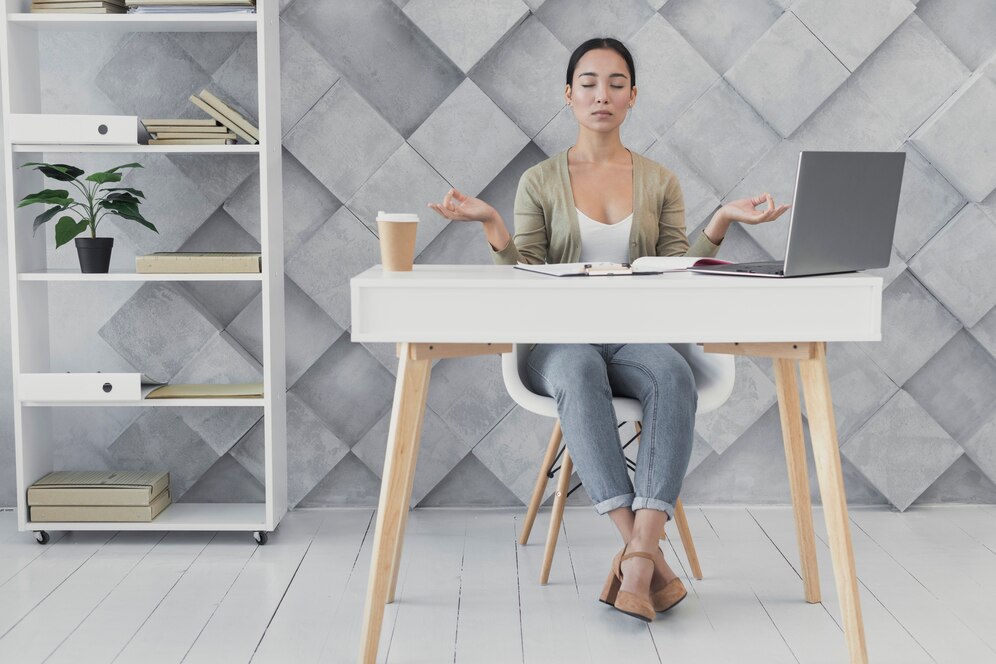
How to Create a Work-Life Balance with a Dedicated Workspace
In today’s fast-paced world, achieving work-life balance has become more crucial than ever. With the rise of remote work, many individuals struggle to draw a clear line between professional obligations and personal life. This challenge is often exacerbated by the lack of a dedicated workspace, which blurs the boundaries between work and home.
Without proper separation, you may find yourself checking emails during dinner or working late into the evening. On the flip side, household distractions can creep into your workday, reducing productivity and focus. Establishing a well-defined workspace is essential for creating a clear distinction between work and leisure, promoting both efficiency and well-being.
Whether you are a full-time remote worker or simply want a more organised home office, this guide will provide you with practical strategies to transform your space and achieve a healthier work-life balance.
Pro Tip: To maintain work-life balance, establish clear physical and digital boundaries. Physically leave your workspace at the end of the day and set specific times for checking emails or social media to avoid burnout.
Quick Guide: How to Create a Work-Life Balance with a Dedicated Workspace
- Identify the Right Location: Choose a quiet, private spot with ample natural light and proper ventilation. If space is limited, consider creative solutions like a foldable desk or repurposed closet.
- Invest in Ergonomic Furniture: Select ergonomic furniture such as an adjustable chair, desk, and monitor stand to support long hours of work and avoid physical strain.
- Personalise Your Space: Add plants, artwork, or ambient lighting to make the workspace inspiring and calming.
- Establish Technological Boundaries: Ensure a strong internet connection, use noise-cancelling headphones, and set specific times for digital tasks to reduce distractions.
- Set Clear Work Hours and Take Breaks: Stick to defined work hours, use techniques like Pomodoro, and take breaks to avoid burnout.
Important Tip: To prevent distractions and maintain focus, keep your workspace clutter-free. Use minimalist designs and manage sound by incorporating soft furnishings or noise-cancelling headphones.
Key Benefits of a Dedicated Workspace

1. Enhanced Productivity and Focus
A dedicated workspace helps you mentally separate work from home life, making it easier to switch into productivity mode. When you have a designated area solely for work, your brain forms a psychological association with that space, boosting your ability to concentrate.
How It Works:
- When you enter your workspace, your mind automatically recognises it as a place for work-related activities.
- This helps eliminate distractions, making it easier to stay on task.
- You are less likely to mix leisure with work, helping you work more efficiently.
Supporting Data: A study conducted by the University of Exeter revealed that employees who had control over their workspace design were up to 32% more productive, demonstrating the direct impact of a personalised, organised workspace on output quality.
2. Clear Work-Home Boundaries
One of the biggest challenges of remote work is the blurring of boundaries between your job and personal life. When you do not have a dedicated workspace, it is easy to fall into the trap of overworking or becoming too relaxed during work hours.
Key Benefits of Clear Boundaries:
- Improved time management: Defined work hours prevent you from working late into the evening.
- Better relaxation time: When you leave your workspace, you can mentally switch off from work.
- Healthier relationships: Boundaries ensure you are fully present with family and friends outside of work hours.
Pro Tip: At the end of the day, physically leave your workspace to signal the end of your work shift. This small ritual helps your mind transition into relaxation mode.
3. Better Mental and Physical Well-being
Blending your work and personal life too closely can lead to burnout. Working from couches or kitchen tables may seem convenient, but it can negatively impact both posture and mental health.
How a Dedicated Workspace Improves Well-being:
- Physical Comfort: Using ergonomic furniture reduces the risk of back pain, neck strain, and repetitive stress injuries.
- Reduced Stress: Having a separate area for work helps reduce stress and anxiety, as you are not constantly reminded of work responsibilities during personal time.
- Increased Motivation: A clean, inspiring workspace encourages you to stay motivated and productive throughout the day.
4. Improved Work Quality and Efficiency
When you have a dedicated workspace, you are more likely to stay organised and work efficiently.
- Reduced distractions allow you to focus better.
- Easy access to essential tools and resources improves workflow.
- An organised environment helps you streamline tasks and minimise wasted time.
Step-by-Step Guide to Creating a Dedicated Workspace

Step 1: Identify the Right Location
Choosing the right location is the foundation of a productive workspace. If you have a spare room, consider converting it into a home office. However, if space is limited, you can still create a dedicated area within a larger room.
Key Factors to Consider:
- Privacy: Choose a low-traffic area with minimal disruptions.
- Lighting: Opt for spaces with ample natural light to reduce eye strain and boost mood.
- Ventilation: Ensure proper airflow for comfort and productivity.
Creative Solutions for Small Spaces:
- Use a corner nook with a compact desk and floating shelves.
- Install a foldable desk in a living room or bedroom for a flexible, space-saving solution.
- Repurpose a closet into a compact office pod with doors you can close when off-duty.
Step 2: Invest in Ergonomic Furniture
Comfort is key to long-term productivity and health. Working at a kitchen table or on the couch may lead to poor posture and physical discomfort. Investing in ergonomic furniture ensures you maintain proper body alignment throughout the day.
Essential Ergonomic Pieces:
- Chair: Choose one with lumbar support, adjustable height, and armrests.
- Desk: Opt for a height-adjustable desk that lets you alternate between sitting and standing.
- Footrest: Supports proper posture by reducing lower back strain.
- Monitor Stand: Elevates your screen to eye level, preventing neck strain.
Pro Tip: Your arms should rest at a 90-degree angle when typing, and your eyes should align with the top of your monitor.
Step 3: Personalise Your Space
While functionality is essential, adding personal touches makes your workspace inspiring and inviting.
Ways to Personalise:
- Plants: Improve air quality and create a calming atmosphere.
- Artwork and Photos: Inspire creativity and make the space feel uniquely yours.
- Lighting Ambiance: Add desk lamps or LED light strips for customisable lighting.
Pro Tip: Use a minimalist design to avoid visual clutter while adding meaningful decor.
Step 4: Establish Technological Boundaries
Having the right technology is essential for seamless remote work. However, setting boundaries around digital use prevents burnout and distractions.
Key Tech Tips:
- Reliable Internet: Ensure a strong connection for smooth video calls and file transfers.
- Noise-cancelling Headphones: Block out distractions during calls or focused work.
- Digital Boundaries: Schedule specific times for checking emails and avoid social media during work hours.
Pro Tip: Use website blockers to prevent digital distractions during working hours.
Step 5: Set Clear Work Hours and Take Breaks
One of the pitfalls of remote work is the temptation to overwork. To avoid burnout:
- Define your work hours and stick to them.
- Take regular screen breaks to reduce eye strain.
- Follow the Pomodoro Technique: 25 minutes of work followed by a 5-minute break.
Pro Tip: Use alarms or smart assistants to remind you to take breaks and log off at the end of your workday.
Additional Expert Tips & Common Mistakes to Avoid
Expert Tips
- Incorporate Natural Elements: Add indoor plants for a biophilic design, which boosts mood and productivity.
- Background Music or White Noise: Use playlists or apps to mask distractions and promote concentration.
- Optimise Air Quality: Use an air purifier or diffuser with essential oils to improve air quality and ambience.
Common Mistakes to Avoid
- Cluttered Workspaces: Too many decorations can become distracting. Stick to minimalism for a cleaner look.
- Poor Lighting: Dim or overly bright lighting can cause eye strain. Balance natural and artificial lighting.
- Lack of Routine: Without set work hours, it is easy to overwork. Stick to a consistent schedule.
Advanced Insights

1. Use Colour Psychology
Colours influence mood:
- Blue: Boosts focus and efficiency
- Green: Enhances calmness and creativity
- Yellow: Promotes positivity and energy
2. Sound Management
Noise distractions reduce focus. Use:
- Noise-cancelling headphones during meetings
- Soft furnishings (curtains, rugs) to absorb sound
FAQ
1. Why is a dedicated workspace important for remote work?
A dedicated workspace creates physical and psychological boundaries, helping you stay focused during work hours and mentally disconnect once you finish. It boosts productivity, reduces stress, and supports overall work-life balance.
2. What if I don’t have a spare room for a home office?
You can still create a dedicated workspace by using small, underutilised areas. Consider setting up a desk in a corner, using a foldable desk, or repurposing a closet into a compact office nook.
3. How can I prevent burnout while working from home?
Establish clear work hours, take regular breaks, and physically leave your workspace at the end of your workday. Use digital tools to manage your schedule and set boundaries around work-related notifications.
Achieving Work-Life Balance with a Dedicated Workspace
Creating a dedicated workspace is essential for work-life balance. By establishing physical boundaries, investing in ergonomic furniture, and maintaining technological discipline, you can enjoy a healthier, more productive work environment.
What changes will you make today to enhance your workspace? Share your tips in the comments below!

